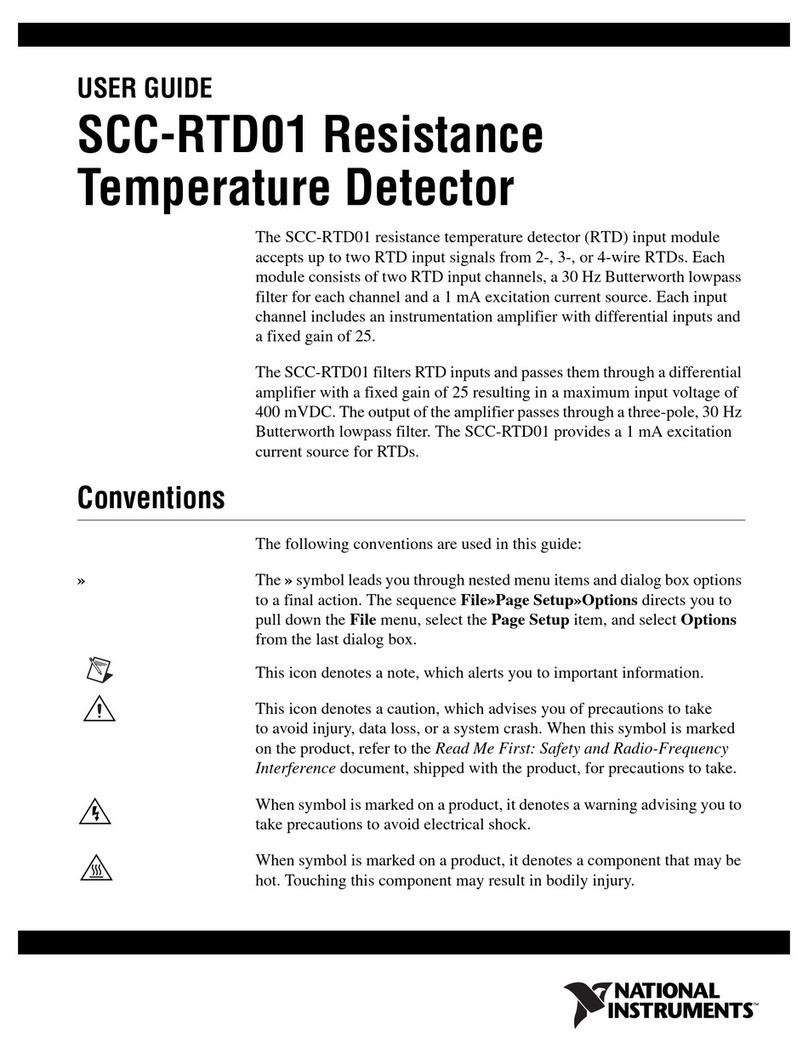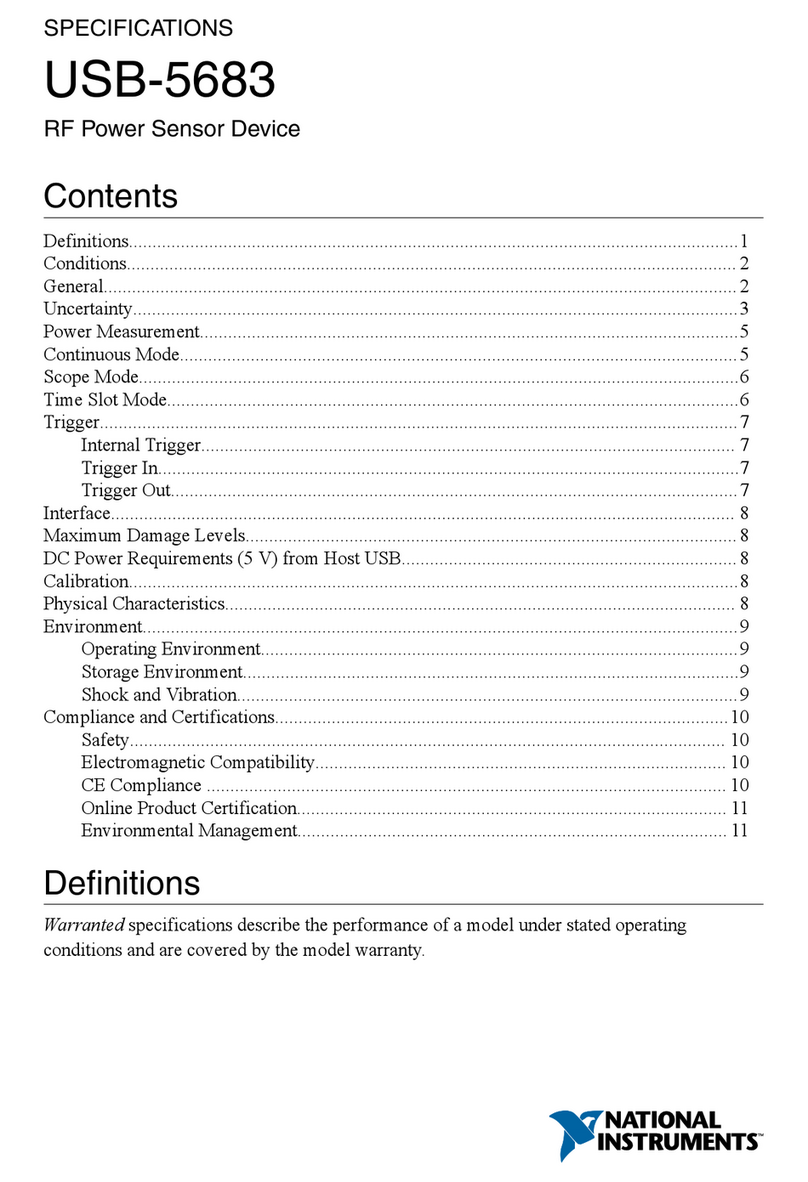
SCC-RTD01 Resistance Temperature Detector User Guide 4 ni.com
If you use the SCC-RTD01 in a dual-stage configuration, the SCC-RTD01
must be the first stage. Plug the SCC-RTD01 into any socket J(X+9) and
plug the second-stage SCC into socket J(X+1), where Xis 0 to 7. Connect
the input signals to the SCC-RTD01 as described in the SCC Quick Start
Guide. The SC-2345 connects the output signals of the first-stage SCC to
the inputs of the second-stage SCC. An example of dual-stage conditioning
is an SCC-AIXX isolated analog input module followed by an SCC-LPXX
lowpass filter module.
Note Refer to the SC-2345/2350 User Manual for more information on single-stage and
dual-stage signal conditioning and configuration.
Connecting the Input Signals
Note The signal names have changed. Refer to ni.com/info and enter rdtntg to
confirm the signal names.
The SCC-RTD01 has six pins and provides two differential AI channels for
measuring the voltage across RTDs. Pins 1 and 2 form a differential
channel routed to E/M Series DAQ device channel X+8, and pins 3 and 4
form a second differential channel routed to E/M Series DAQ device
channel X, where Xis 0 to 7 depending on the socket of the SCC-RTD01.
Pins 5 and 6 carry the 1 mA constant-current excitation source.
For information on how the I/O pins on the bottom of the SCC-RTD01
correspond to signals on the E/M Series DAQ device, refer to the I/O
Connector Pin Assignments section.
Signal sources can be floating or ground-referenced. The SCC-RTD01 has
high-impedance bias resistors typically required for floating sources.
Therefore, floating signal sources do not require external bias resistors
connected to ground.
Note For floating signal sources in high-noise environments, connect the negative
terminal of the signal source to the AI SENSE terminal on the SC-2345/2350
screw-terminal block to reduce common-mode noise.
You can connect one or two RTDs to the SCC-RTD01 in 2-, 3-, and 4-wire
configurations. Figure 1 contains wiring diagrams for connecting one 2-,
3-, or 4-wire RTD to the SCC-RTD01.





























